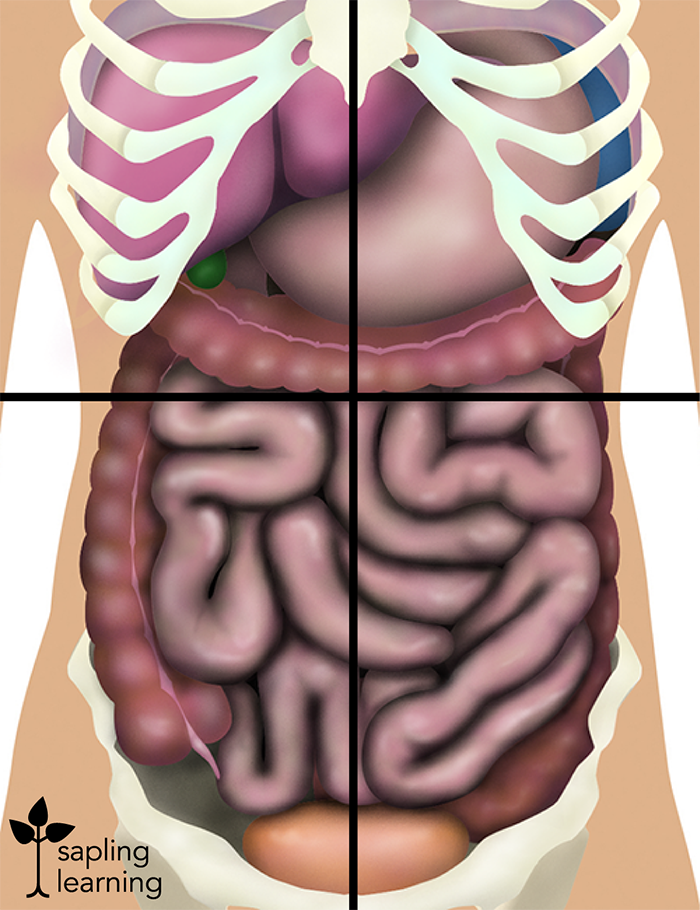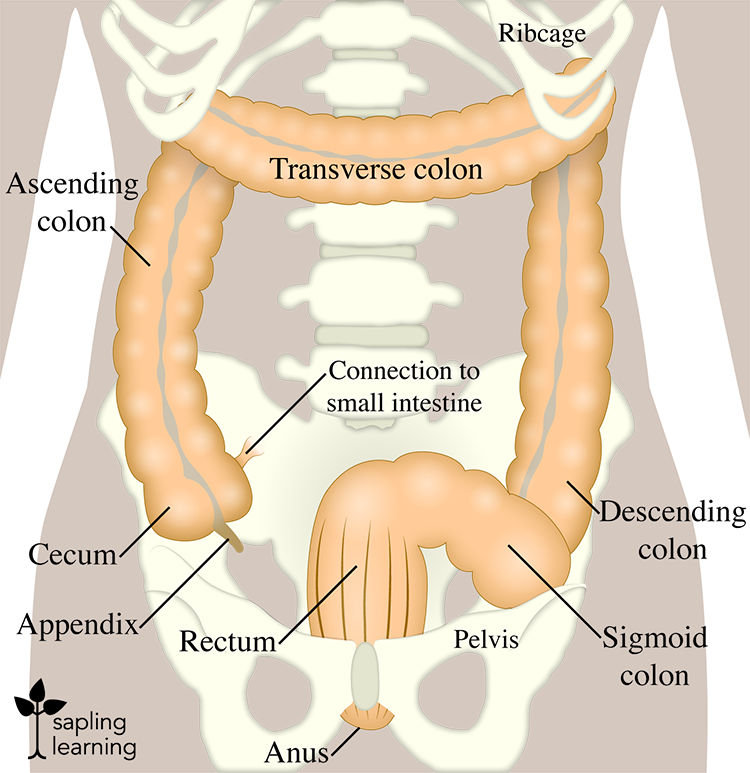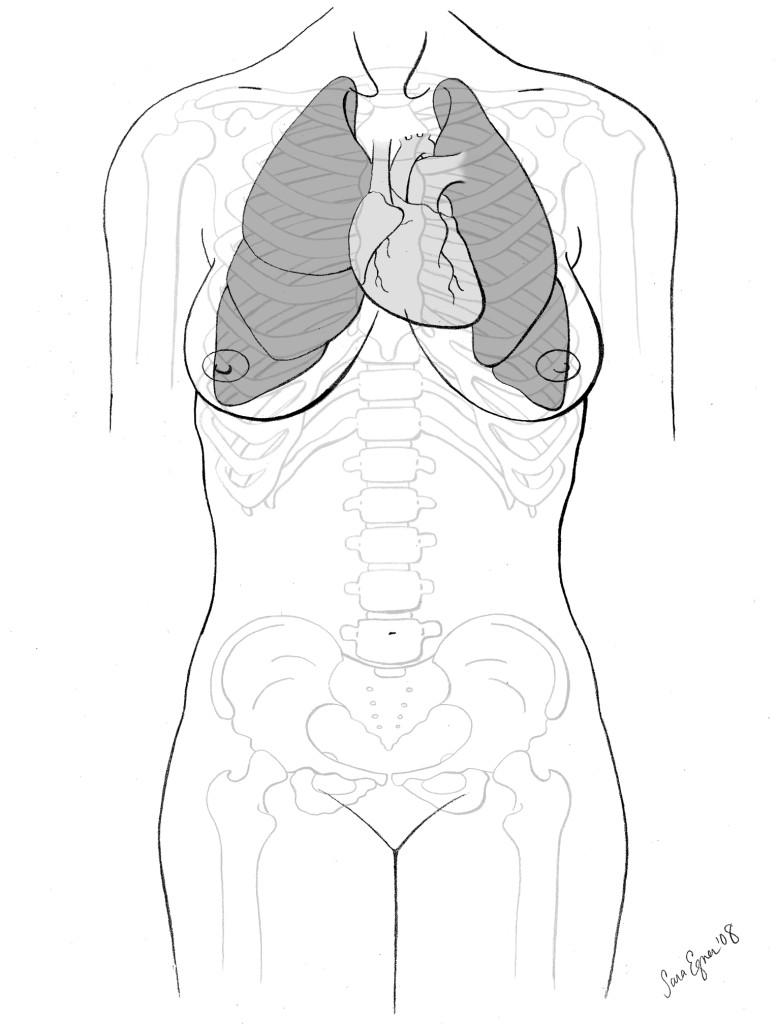Visualizing Organs
Have you ever looked at a packed bag and tried to describe to someone else the exact position of your favorite t-shirt? Without knowing the exact orientation of the bag and the viewer, words like up, down, left, or right are not so useful. Also the shape of said t-shirt becomes very important. Perhaps it’s rolled into a tight little ball and wedged into the neck of your left boot. Or maybe it’s spread out flatly between your hoodie and your jeans. Anatomists go to great lengths to accurately portray the shape and position of our internal structures. And drawing them accurately, requires attention to many landmark points.
I’ve been getting to do some anatomical illustrations lately for Sapling Learning. Most recently I was asked to illustrate the large intestine. This one was interesting because not only did we want to get the large intestine itself to be accurate, but we also wanted to show some reference to where it falls within the body. Initially we discussed another piece I made some months back regarding the four quadrants (yet another system we have to give reference within a body). This view was too cluttered to see much of the large intestine though.
But a large intestine on it’s own, offers no frame of reference at all. In fact, one of the references I saw when I was putting together our representation, tried to show a faint outline of the pelvis behind the intestine. Upon looking more closely, I realized that the artist who had drawn that one had thought that the entire large intestine was seated within the bounds of the pelvis. At one point it was suggested to me that I show the small intestine for frame of reference, but that’s the main thing causing clutter and blocking the view of the large intestine in the first image shown here. So what I wound up doing was placing it within just the skeletal system, and then I was asked to go ahead and give a body outline, much like what was in this first one. And I think that the result worked out nicely.
It’s certainly the cleanest looking intestine I have ever drawn. Something about guts in vector has always seemed a little funny to me. But I really like how this came together. And I’m so glad to have taken the time to get the spacing all right in the first place so that adding in reference points wasn’t just an exercise in pointing out what errors I’d made. In fact, a lot of my planning for this came from a piece I did back in grad school. While it didn’t feature any of the digestive track, it was a very studied placement of the skeleton within the body and I was very specific about the heart and lung placement which were shown.
That class exercise was so useful, and I’ve come back to it again and again for various things. Both the ribcage and the pelvis can be deceptive in how they sit in the body. Personally, I always think that a ribcage looks tipped forward when it’s actually upright. It’s easy to want to straighten it out for your illustration. Even knowing about this optical illusion, I still have to fight the urge myself. The pelvis is a little like that too, though one could argue that it just actually is tipped forward. But if you are holding a pelvis apart from the rest of the body it came from, or if you are looking at a photograph of a pelvis, it’s easy to want to straighten it up too.
The spine is fabulous for reference. Knowing the relationship between an organ and specific vertebra can tell you a lot. But then you also have to remember that not everyone is packed in exactly the same, and even within the same person there is a certain amount of flexibility. To return to the luggage example, we all know that the contents may shift while traveling. The diaphragm moves up and down with every breath, as does everything that it moves with it. And the act of digestion can certainly have an effect on the shape of the digestive track at any given time. And there are differences between when a person is upright or lying down. I’m sure that things sit very differently when one is doing handstands. But we find the landmark relationships that we know. And when it’s important, patients are placed into known positions and always scanned before surgery, to keep surprises in the OR at a minimum. And artists like myself go on fussing about levels and planes and curvature and just how much variety there is in the shape of a stomach, or whether to show a more taught or more draped transverse colon.


